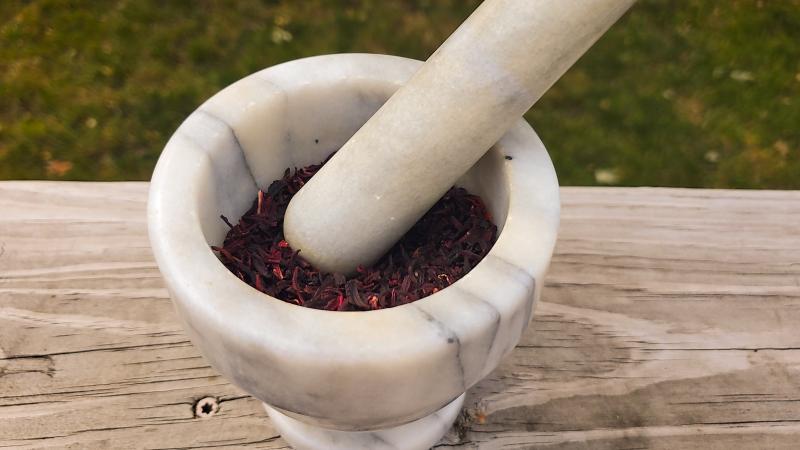
Herbalism: the natural way to healing
Herbalism is medicine straight from the source and is the natural way to maintain health and well-being.
There are different types of herbalism such as Native American herbalism, clinical herbalism and Chinese medicine, to name a few.
While the various types of herbalism may seem like a lot to take in, let's start at the beginning — what is herbalism?
Herbalism as defined by Natural Healers is "the use of plants for therapeutic purposes to treat and prevent disease and promote health."
Many herbalists define herbalism in different ways as it has more than one meaning, depending on how the individual plans to go about their herbal journey.
Herbalism has a long history that dates to around "5,000 years ago by the Sumerians in ancient Mesopotamia," according to the Herbal Academy. The very first written record of plant usage was printed on clay tablets. These tablets contain a dozen recipes using over 250 plants.
Herbalism is a common practice and has been over the past few decades. However, it was not always accepted and was considered “witchcraft” at one time.
The Salem Witch Trials are well-known in American history. According to the Herbal Academy, “witchcraft, understood as a form of religion, was believed to threaten the status quo as well as the predominant religious faith and accepted perspectives in society.”
Due to the tragic events of witch hunts, witchcraft and herbal practices came to a halt. However, the Herbal Academy explained that by the 1700s CE, “herbalism was the predominant source for medical knowledge, and the herbal literature of the time were consulted arguably more so than general physicians were.”
As the history of herbalism stretched throughout time, it continued to be shared and practiced. One of the common herbal teachings today is Native herbalism.
There are a variety of ways indigenous people practice herbalism, and it varies by tribe. Each tribe has a set of beliefs, ceremonies and spirituality that differ from other tribes, but each one serves a purpose and important role, according to the Indigenous Native American Healing Traditions journal.
The journal also mentioned that in indigenous culture there is a popular saying, "We are all related; all things live in relationship to one another.”
This saying can be expressed as the earth is man-made, and everything within it is shared. This is what I was taught at a young age.
Everything I have learned was taught to me by my mother. I have learned over the past five years ways to prepare tinctures, cold and flu syrups, salves, infusions and many other concoctions.
Tinctures are different from infusions as there are different ways to make them, but let's take a look at what tinctures are.
Tinctures are “herbal preparations that use something beyond water as a solvent,” according to the Herbal Academy. A solvent can be anything from alcohol, vinegar or glycerin as these are used to extract healing properties from the plant and preserve the tincture. This will also help the tincture last longer on the shelf.
Recently, I made a tea infusion for a sore throat that was lingering. The infusion is brewed and steeped, then stored for one week (this can also be stored for 2-3 hours or overnight). Storing the infusion for one week helps the properties infuse together and receive all the benefits. However, it is important to note that raw honey is highly recommended over processed honey if it is applied to the infusion, as processed honey is not filtered.
I am sharing my sore throat tea infusion recipe to help individuals learn how to treat their ailments from home with a few simple ingredients.
The recipe requires:
- Half a lemon
- 2 tablespoons of hibiscus tea, cut and sifted
- 1/4 cup of raw honey* can use regular honey or sugar
- Boiling water
The first step is to slice half of a lemon and add to a jar. I would recommend using an 8-ounce or larger jar, like I have used here.
Credit: Willow Graley
Caption: Lemons in a jar.
Next, boil the water. Once the water is ready, add two tablespoons of the hibiscus tea, cut and sifted, into a tea strainer and pour the boiling water over the strainer. I took one of my lemons, squeezed the juice inside and left the peel — but that is optional.
Credit: Willow Graley
Caption: Hibiscus tea with lemon.
After you pour the boiling water, let the tea steep depending on how strong you like it. I let mine steep for an hour as hibiscus tea is known for its bitterness. After the tea steeps, add the honey. Again, if you are adding honey I recommend raw honey, however, you can use regular honey or agave if you do not have raw honey. If you are sensitive to honey or have allergies, you may use sugar in place of honey.
Credit: Willow Graley
Caption: Adding honey to the tea infusion.
After adding the honey to the infusion, put a lid on it and shake well.
Credit: Willow Graley
Caption: Tea infusion ready for storage.
Once the tea is ready, you can store it for up to three months. The longer it sits, the more bitter it will be. Adding sugar, honey or another sweetener can tame the bitterness of the tea. Hibiscus tea promotes a healthy heart, blood flow, helps balance cholesterol and many other cardiovascular ailments, according to Healthline.
Now that the tea infusion is ready for use, take one tablespoon three times a day for a week, or longer if needed. This infusion can be used for colds and the flu, but if honey is used, children two and below should not have it due to honey being a choking hazard, according to the CDC.
If you are interested in learning more about herbalism and would like to start making herbal medicines at home, I recommend reading these books to help you get started.


